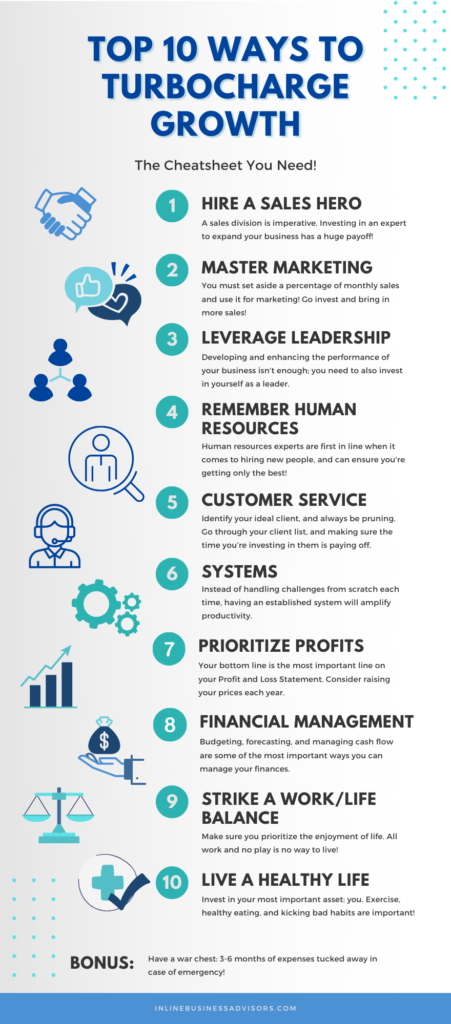If you are a small business owner, you probably know that keeping everything running smoothly can be a huge challenge. From dealing with customers to processing orders, there’s always something that requires constant attention.
Businesses are complex systems with many moving parts, and just like machines require regular maintenance to work optimally, so does a business. If neglected for too long, or if its owner isn’t competent enough to operate it themselves without the right structure, systems, and organization, that business will stagnate or fail because you can’t keep up with everything.
But what if there was a way for your business to run even when you weren’t there? That’s where a Business Operating System, or BOS, comes in. Small businesses need Business Operating Systems for many reasons, including better productivity, easier collaboration between team members, and improved data management. Simply put, your BOS takes care of all the mundane tasks so you can focus on making money and growing your company.
So, what is a Business Operating System, and what are its components? Do all small businesses need a Business Operating System? If so, how do you build one?
In this article, we’ll define what a Business Operating System is, outline the benefits of building one for your small business, the functions it needs to do, and show you how to go about it. Ready to take the plunge? Let’s get started!
What is a Business Operating System?
A BOS is simply a set of rules, procedures, and processes that keep your business running smoothly even when you’re not there to manage it. This system encompasses how your organization operates, implements marketing, produces, and interacts with customers. When established correctly, an effective BOS transcends the people doing and overseeing the work and lends you more efficiency.
In other words, the BOS is an essential component to running and scaling your business. It synchronizes your processes, methods, and mechanisms and powers your business strategy ensuring you succeed. Just as your computer can’t operate without an OS, your business can’t run effectively without a BOS.
A basic Business Operating System is an IT service that helps your company run seamlessly by integrating your business strategies and processes. This software package outlines the critical functions of each role in the organization, the processes and why they matter, and the desired results and goals.
A BOS can be as simple as a scheduling app, or it could include other aspects like inventory management and email. Some also offer help with project management, customer relationship management (CRM), marketing automation tools, document collaboration services, and task automation. This frees your time to concentrate on growing your small business, building an A Team of employees, and aligns your teams to your vision.
Benefits of Having a Business Operating System
Do all businesses need a Business Operating System? Yes, they do! The benefits of an operating system are numerous, but they all center around the idea that having one will help make your company more efficient and profitable.
As mentioned above, a BOS can help you reduce the time you spend overseeing mundane tasks by automating them. It can also align your teams with your vision and hold them accountable at each stage of the process.
A good business operating OS can do much more than just run your small businesses. Other benefits of having a BOS include promoting growth, improving efficiency, reducing risk, ensuring consistency, measuring success, and motivating employees.
1. Improve efficiency
A business operating system can help you automate tasks, improve communication between departments, and streamline processes. If your BOS handles tasks like email scheduling, for instance, it leaves you with more time to focus on other roles requiring your attention.
The same goes for communication. An effective BOS ensures that all team members know what they are expected to do and when to do it, whether the owner is there or not. Clear communication means better service delivery, which in turn, results in more productivity. In the long run, this will lead to increased efficiency and savings on your time budget.
2. Promote growth
A good business operating system can help you identify opportunities early on and leverage them for growth. Having proper systems in place will boost sales growth and save money on marketing costs. You can use the savings to expand your operations and grow your team.
3. Reduce risk
While risks are entirely unavoidable in business, you can reduce them by implementing a good Business Operating System. For instance, the BOS can help you track inventory, manage customer relationships, and safeguard your data. If done correctly, a good BOS can help keep your small business safe from harm and set you up for sustained success.
4. Ensure consistency
Data collection and interpretation can help you understand patterns and how to replicate them for sustained success in your service delivery. Instead of going through it manually to understand what your team can improve on, a BOS with a CRM integration can help you identify customer touchpoints, their demands, and areas of improvement.
5. Help measure success
A measurable goal is the first step to business success. As we know, your customer experience impacts your business revenue to a large extent. A BOS can help you analyze, track, and measure customer desires and demands to help you improve the quality of your output and consistently exceed customer expectations. It can also help you adjust your goals and timelines based on past success and trends.
6. Motivate employees
Even the best team members will produce mediocre results if their roles are not clearly outlined. Building a BOS that functions around rewarding productive employees is key to building an A-team. An effective BOS can help you avoid high turnover by clearly defining the roles and responsibilities of each person, their expected deliverables, and the timelines. Motivated individuals will use that to give their best, which will in turn give them more job satisfaction.
In short, a good BOS can be a key factor in your small business’ success.

How to Know When Your Small Business Needs a BOS
Every business should operate correctly from the outset. That said, small business owners often have too much on their plate and may need to choose between implementing a BOS and something else.
So how do you know when your small business needs a BOS? In the same way that all businesses need to be lean to grow sustainably over time, they also need to be agile to thrive. Many indicators may signal the need for a new BOS and provide signs you can’t afford to ignore. These include:
Stagnation
Every small business owner wants to scale their business to greater heights. In fact, that is expected to happen within specific timelines. One way you can tell your small business needs a BOS is if your company has hit its growth limit because it is too difficult to scale.
If your business is experiencing difficulties and not achieving set goals, that’s a red flag you should not ignore. Without implementing a BOS, you might find yourself wasting precious resources and time and still make no headway.
Operational Chaos
We all agree running a small business is tough. There are so many tasks to handle and not enough hours in the day, but that shouldn’t hinder productivity. However, you should be worried if you constantly feel that the wheels are coming off.
It could be that there are too many things going on at once or some of the parts of the company are not functioning as they should. It could also be because your team is constantly missing valuable opportunities.
A good BOS should staunch the bleeding from the source and help you realign yourself to the goals you need to achieve.
Unclear or inadequate communication
Clear communication is the backbone of a thriving business. Without that, you run the risk of wasting resources, missing opportunities, and losing key connections.
At the very least, you want systems in place or processes that work across departments. Lack of a clear communication system will lead to inefficiencies within the departments, the company, and the processes that drive your business.
It may also make the day-to-day operation of the company more difficult than before because everyone’s responsibilities have become too intertwined. If you feel like you’re in a constant state of chaos, it’s time to think about whether or not this is because of inefficient communication.
A good BOS can help address these issues and boost overall efficiency.

The functions your BOS must do
Once you’ve assessed your business needs, it’s time to start planning which business operating system is the best fit for your small business. There are three major things your BOS must do.
Define goals and expectations
A good BOS should clearly outline the roles every member of your team is expected to perform. As we’ve already established, your goal should be to create a well-oiled system that runs seamlessly with minimal input from you. That means everyone in the organization should be aligned with your vision and mission.
With that defined, it will be easier to hold the team accountable and track their progress with minimal distractions.
Formulate a response plan
We know what they say about best-laid plans. In the business world, things will go wrong despite your best efforts to prevent that.
The role of a BOS is to identify potential pitfalls and prepare a response plan that will help you stay on top of emerging issues. That way, you will not depend on guesswork in case something arises or destabilize your entire team.
Provide measurables
The best way to determine your team’s performance is by setting a standard deliverable for all members. By assessing their achievements against Key Performance Indicators, you can tell how well they did toward the set goals and expectations outlined for their role. This not only promotes the value of hard work and dedication but also strengthens the corporate culture.
How to build your own BOS
The benefits of implementing a BOS outweigh the initial costs of having one. There are several ways to create your own business operating system. Here is an overview of three popular methods:
DIY method
The DIY method involves compiling existing software into a BOS. The process begins with documenting every business process as comprehensively as you can. Write down your daily processes, and then move on to the weekly and monthly ones. You can use this stage to assess how well other members of your team can complete tasks they’ve never performed before. Their effectiveness will tell you how strong your BOS is and pinpoint areas requiring improvement.
The next step is identifying your processes and procedures and documenting them in the corresponding system. Your goal should be to see how the system works and the processes that make it up.
Once you define the systems, it’s time to differentiate the roles. The goal is to see who does what role and their full job description. This list should also contain factors such as key responsibilities, expectations, and required skills. By doing that, you’ll discover the roles you need to remove, expand, or break down for optimum productivity.
Assigning roles is the next thing you should do. Match people to their roles based on their skills and communicate that to them. This should ensure that none of them feels overwhelmed or underwhelmed by their roles and that they understand their KPIs perfectly.
The last step is to train your BOS so that everyone on the team knows what they are supposed to do. There are several existing software that will help you do achieve that.
Pre-built method
The pre-built method involves buying a ready-made business operating system. These systems typically come with comprehensive documentation. They can be easier to use than DIY methods, but you may not have the same level of control over them.
Commercial option
If you want more control over your business operating system than either of the above options provide, you can choose a commercial solution. These systems are typically more expensive, but they offer greater flexibility and customization options.
Conclusion
Having a business operating system allows more efficiency and productivity within your organization. It can also take you out of the equation on some departments and eliminate redundancies. It is important to assess the strengths of your business and build on those, but also to find the gaps within your system and address those. Each BOS functions differently within every company, so it matters that you know which processes within your business need streamlining. And once you find the right formula for your organization, you open up a lot more opportunity to scale.
Subscribe to our content to learn more about how to increase efficiency and productivity within your organization.

Larry Vivola is a successful business coach who coaches entrepreneurs anywhere in the world via Zoom. If he’s not coaching he’s making meatballs and entertaining friends and family!
Free Advice Sucks! Invest in a one-time strategy session and pick Larry’s brain to help solve a pressing problem, discuss an idea, or brainstorm how to give your business performance a Turbo Boost!!! In the end your investment will yield you more money, time, and happiness!

